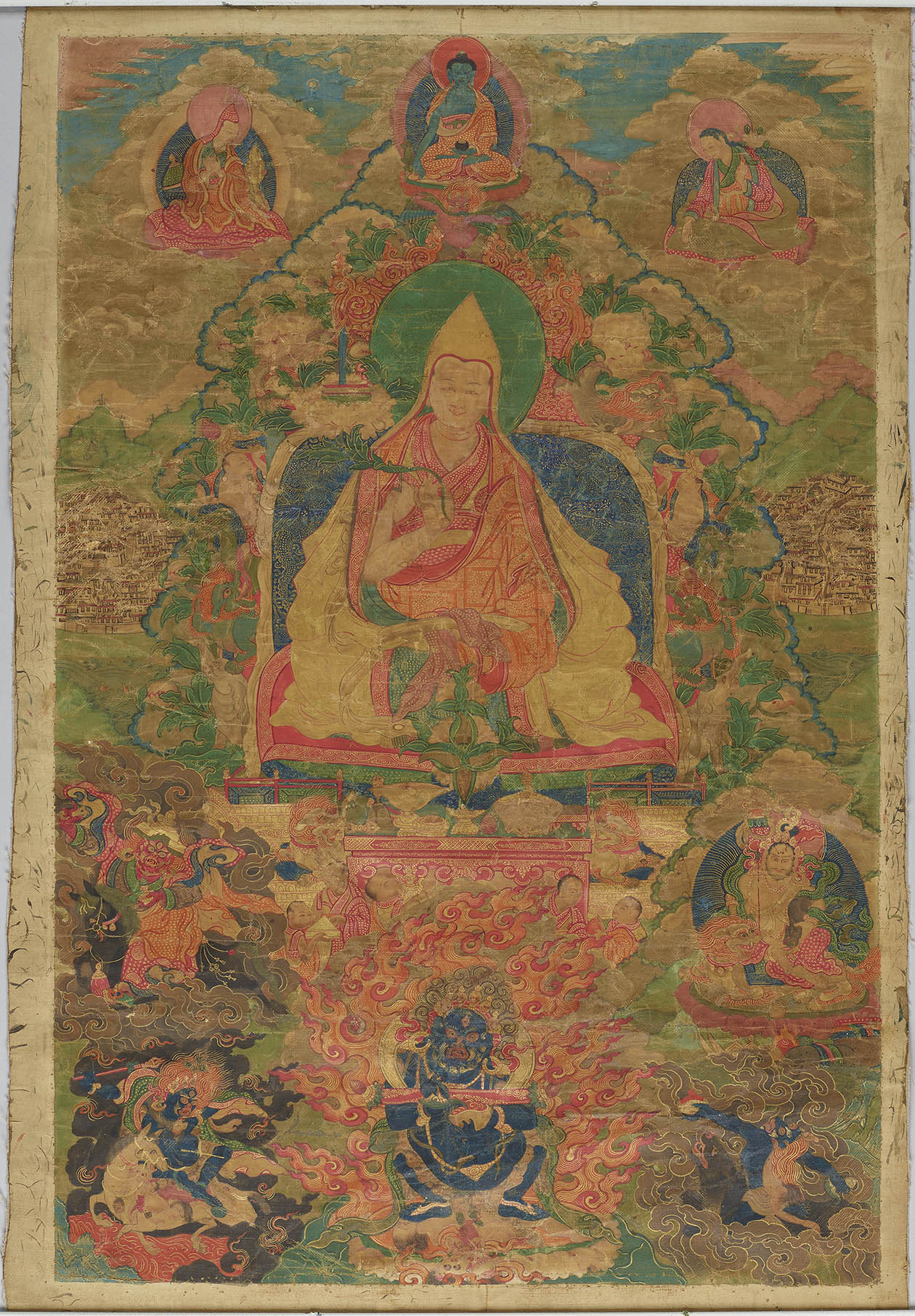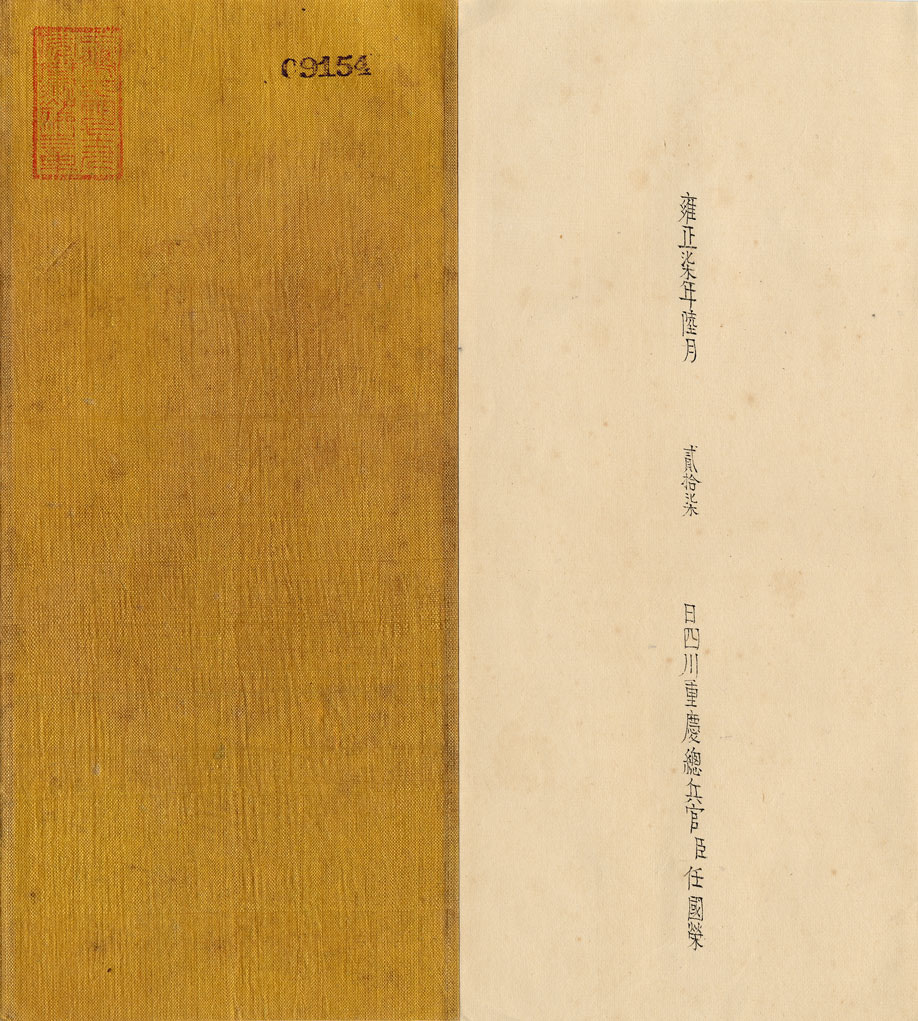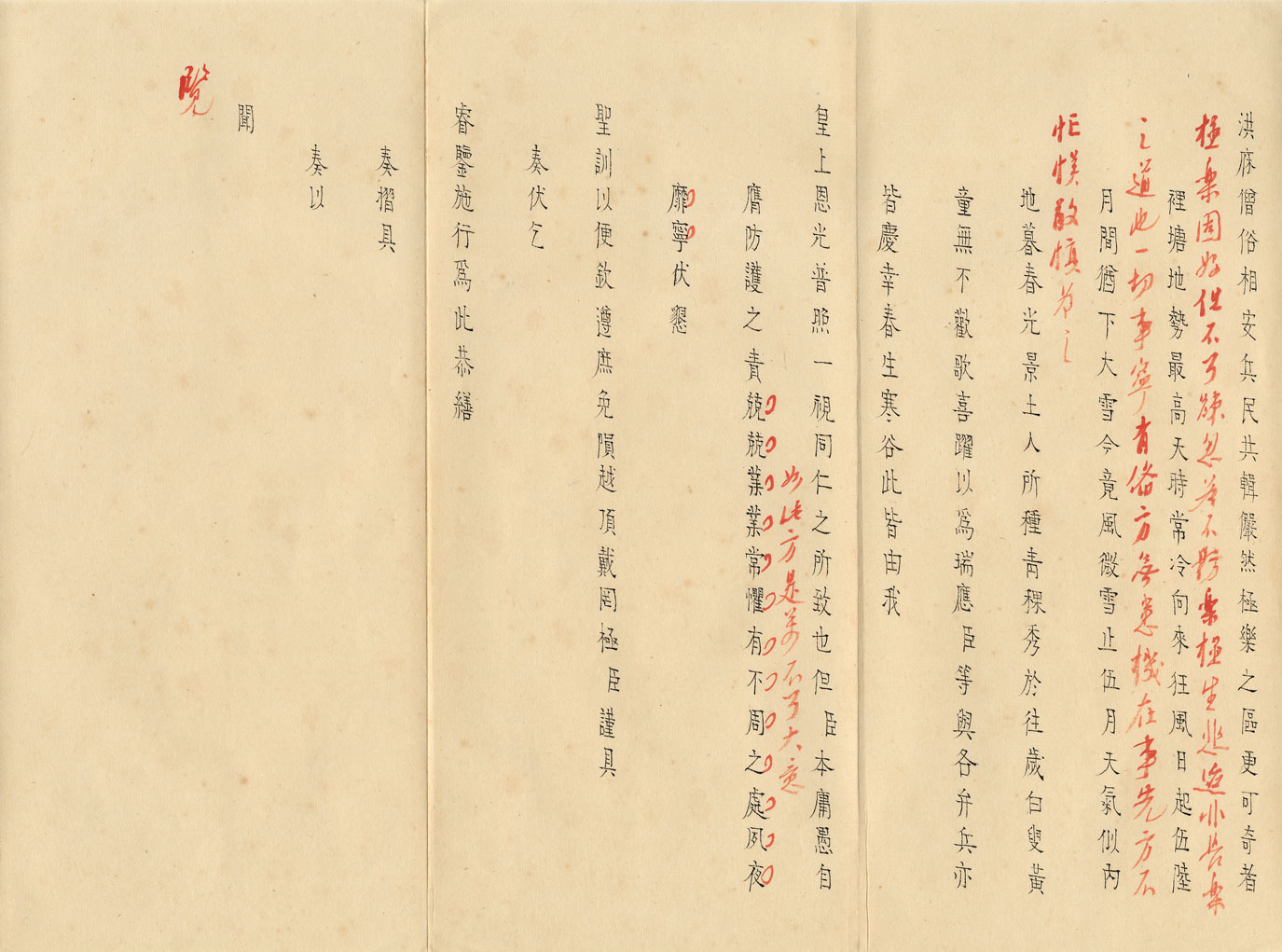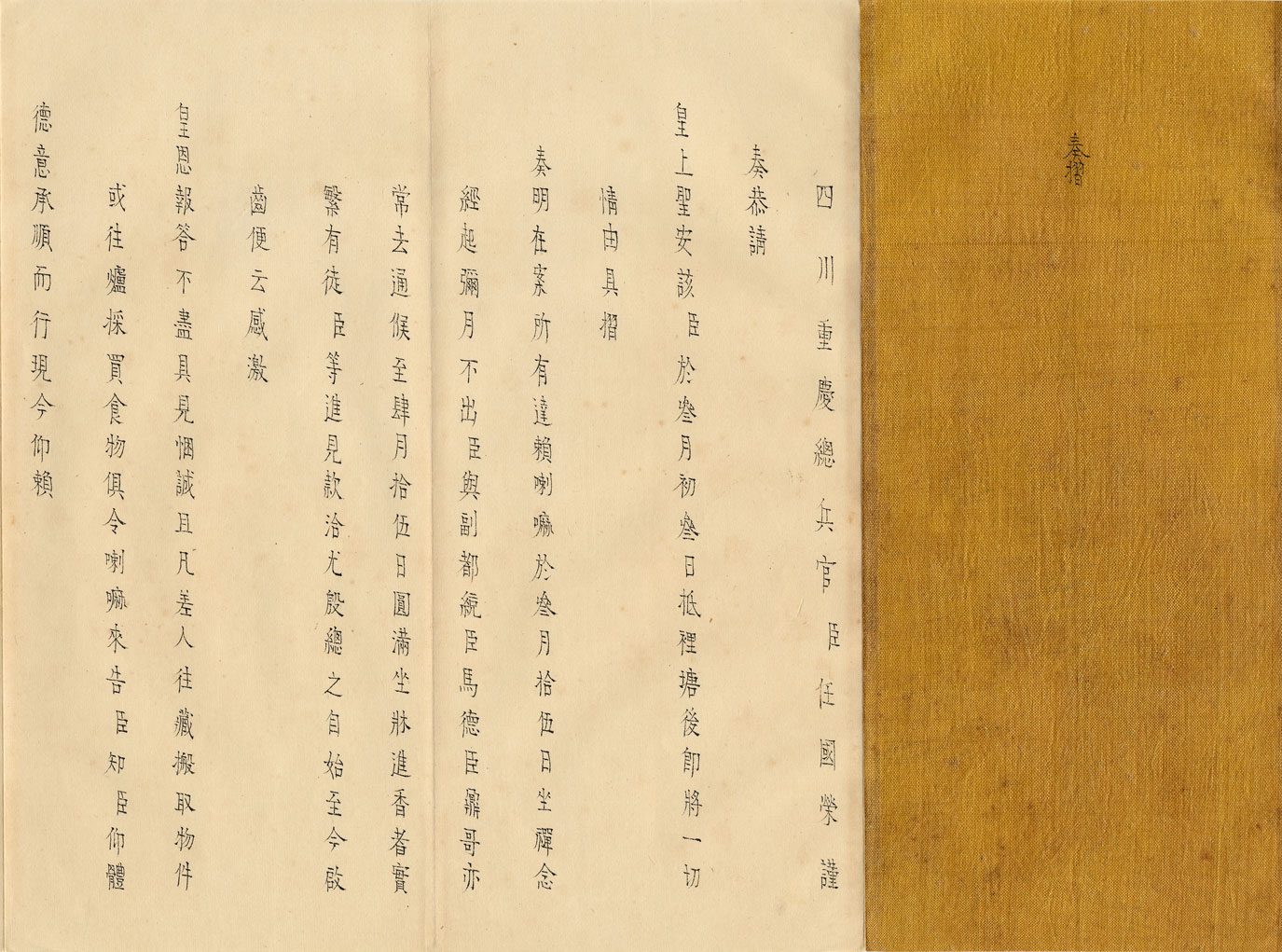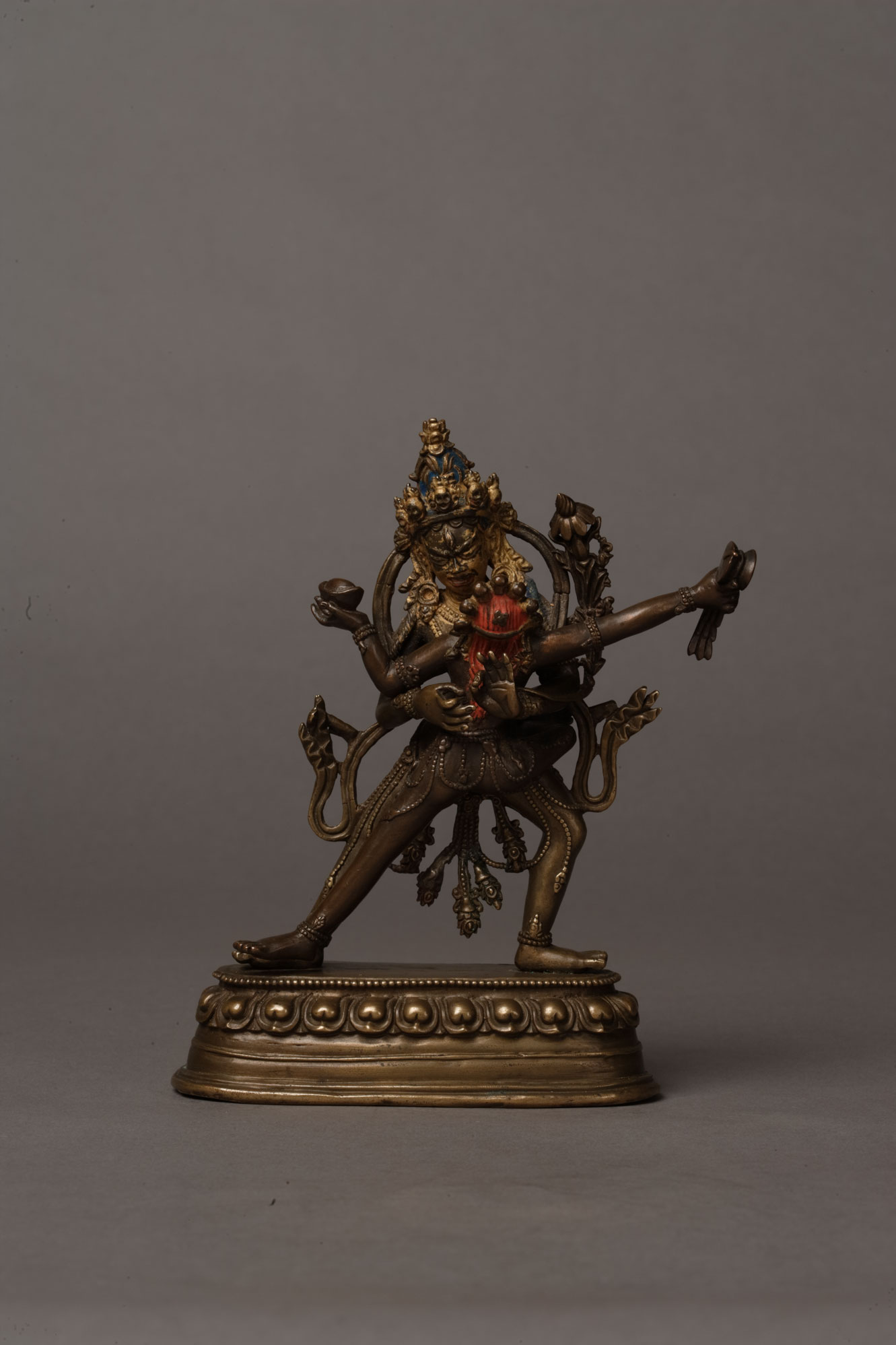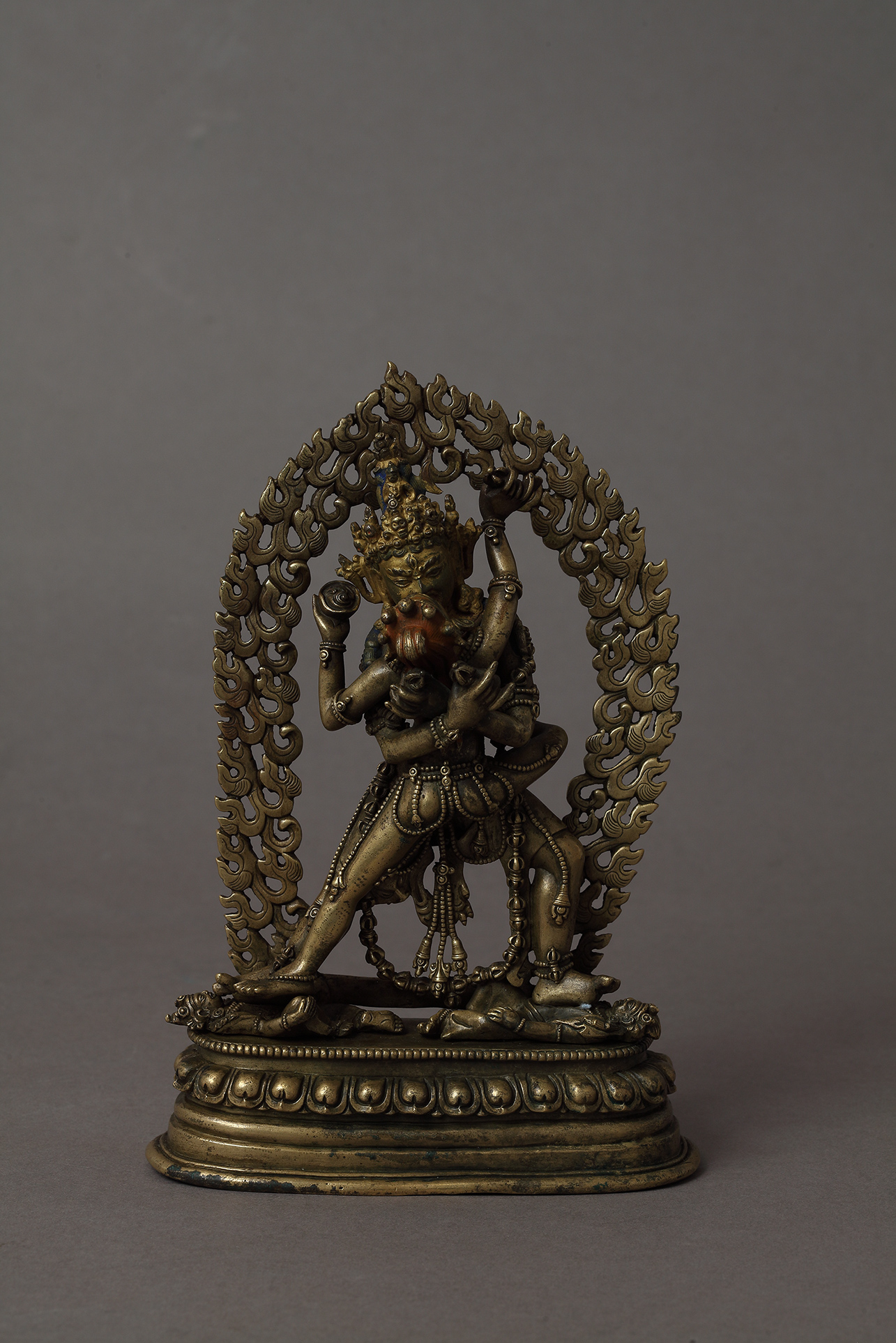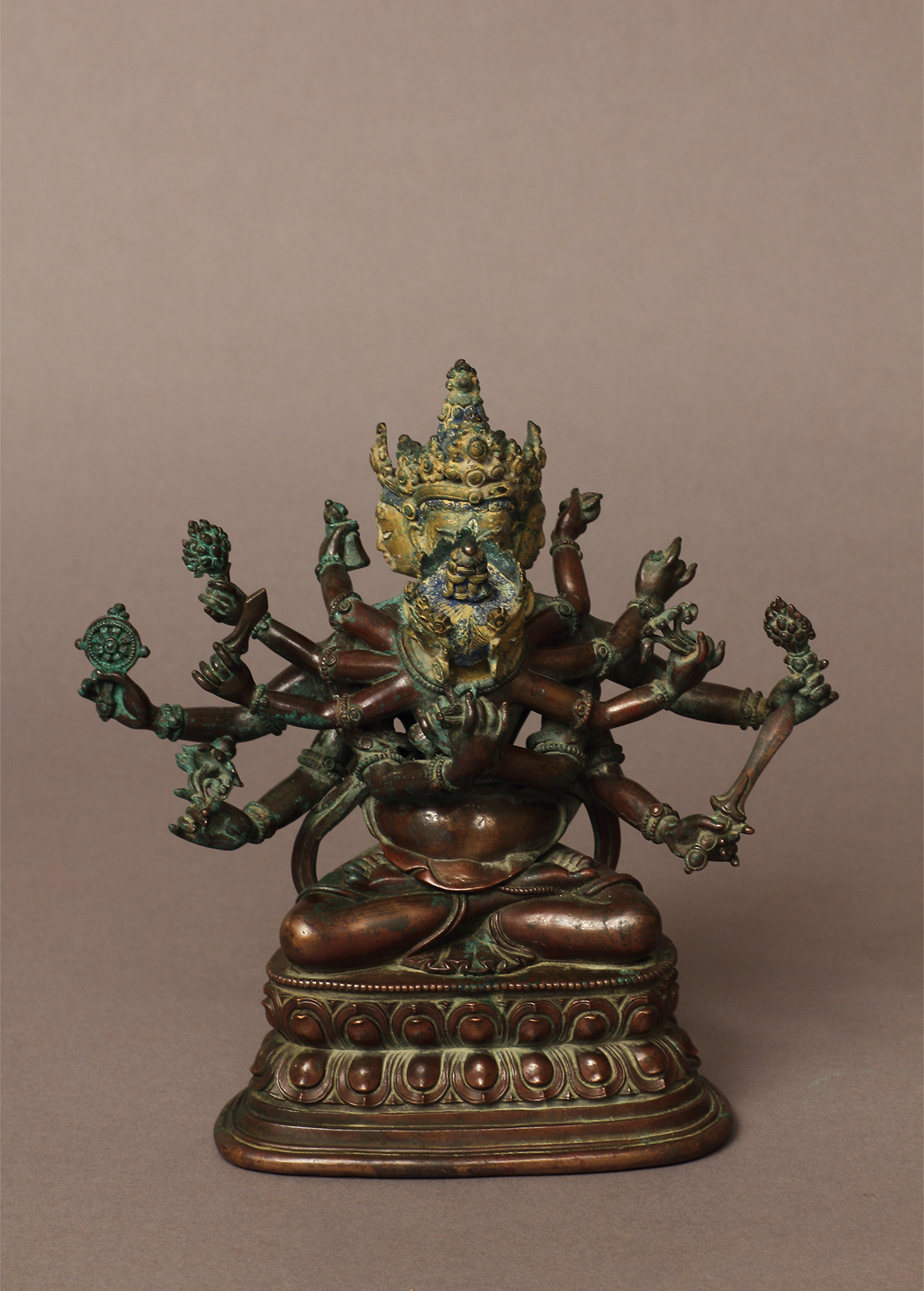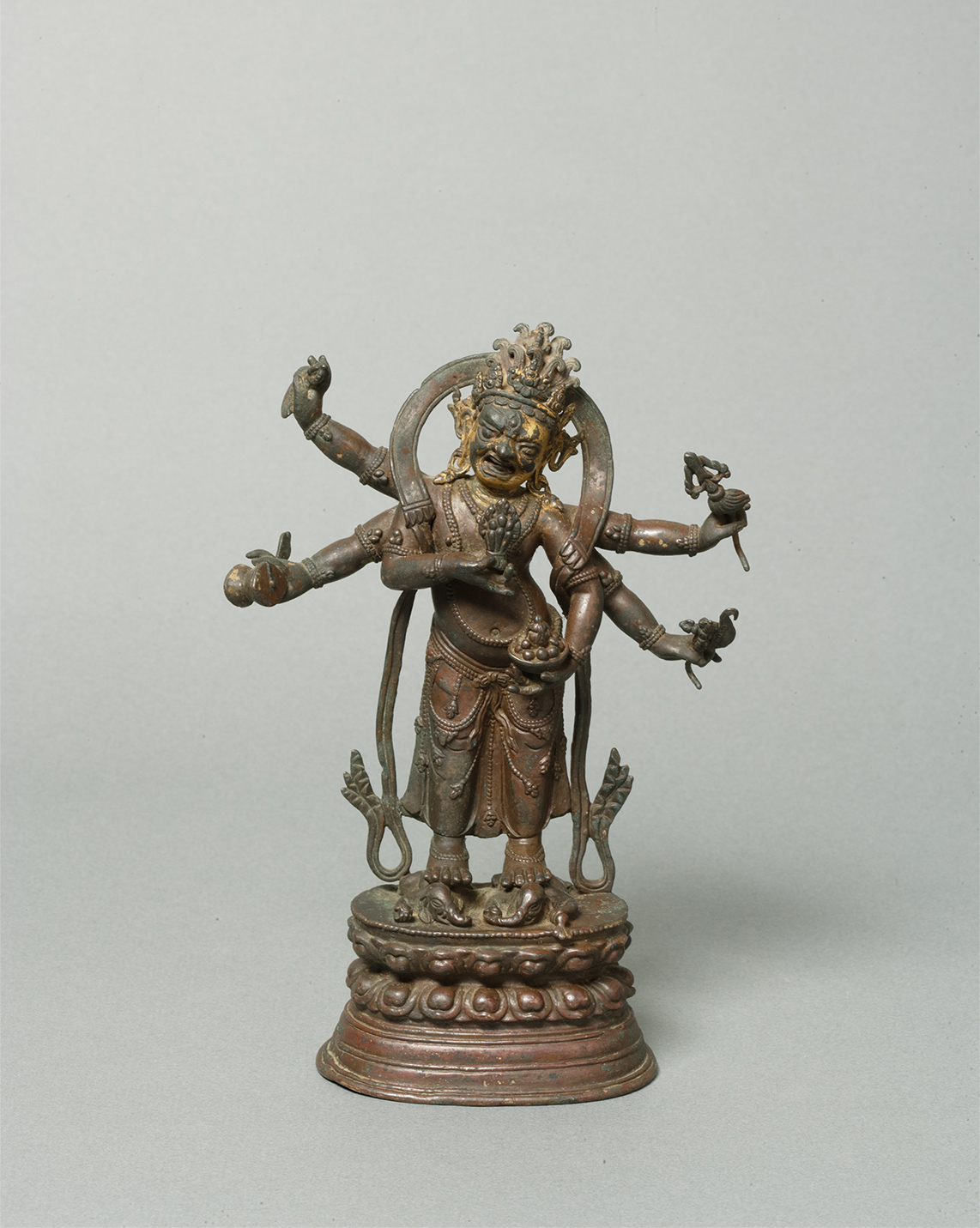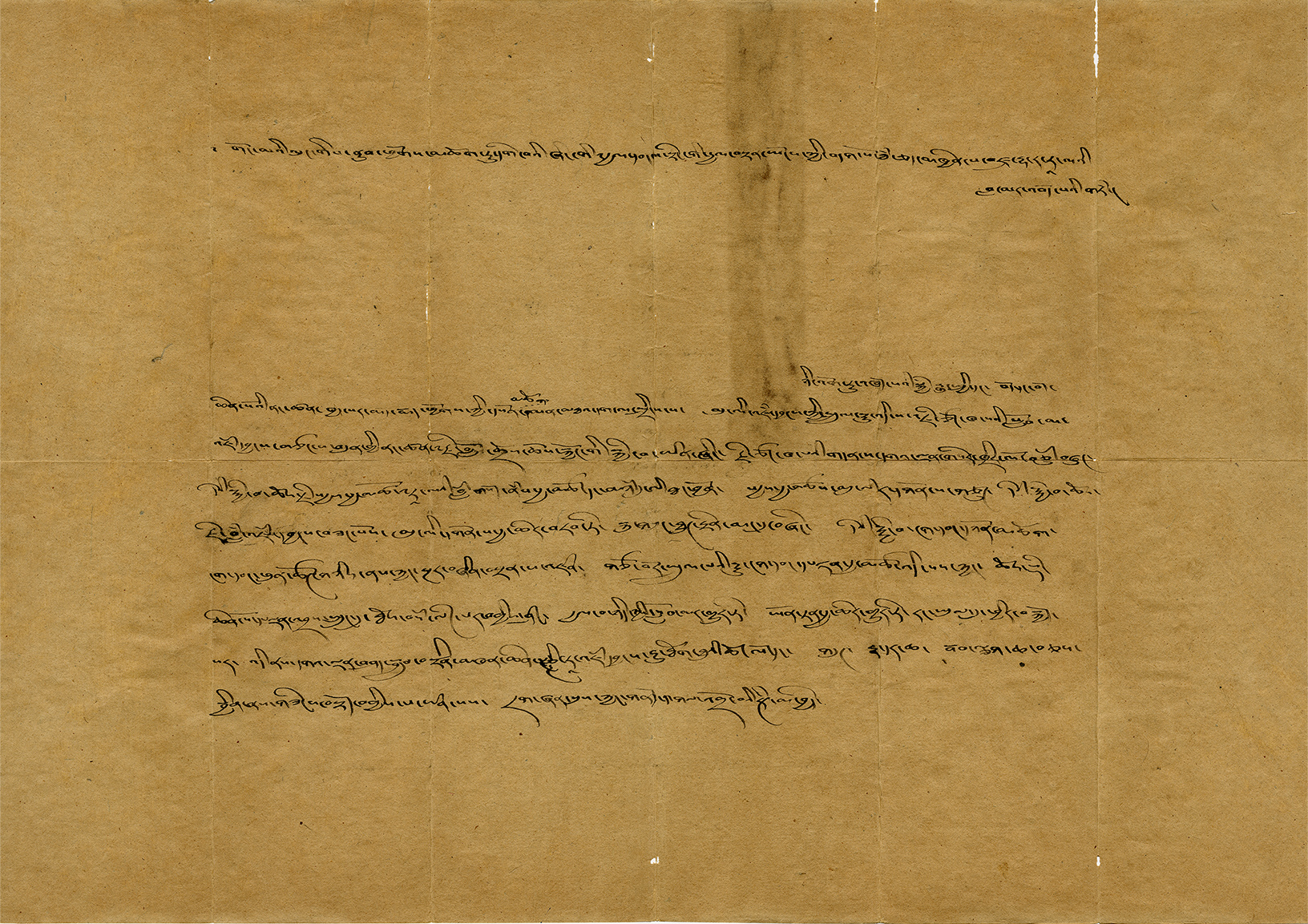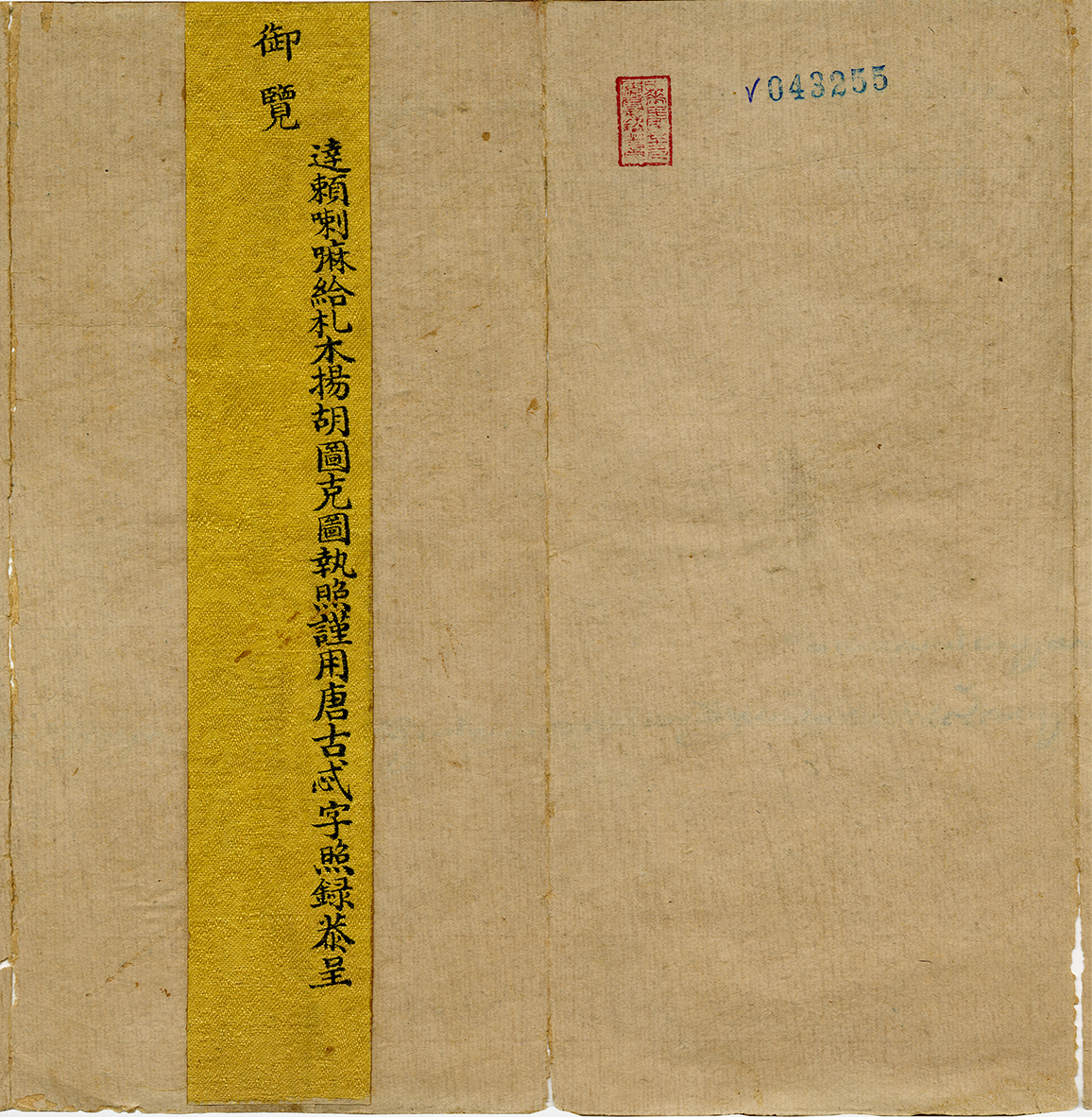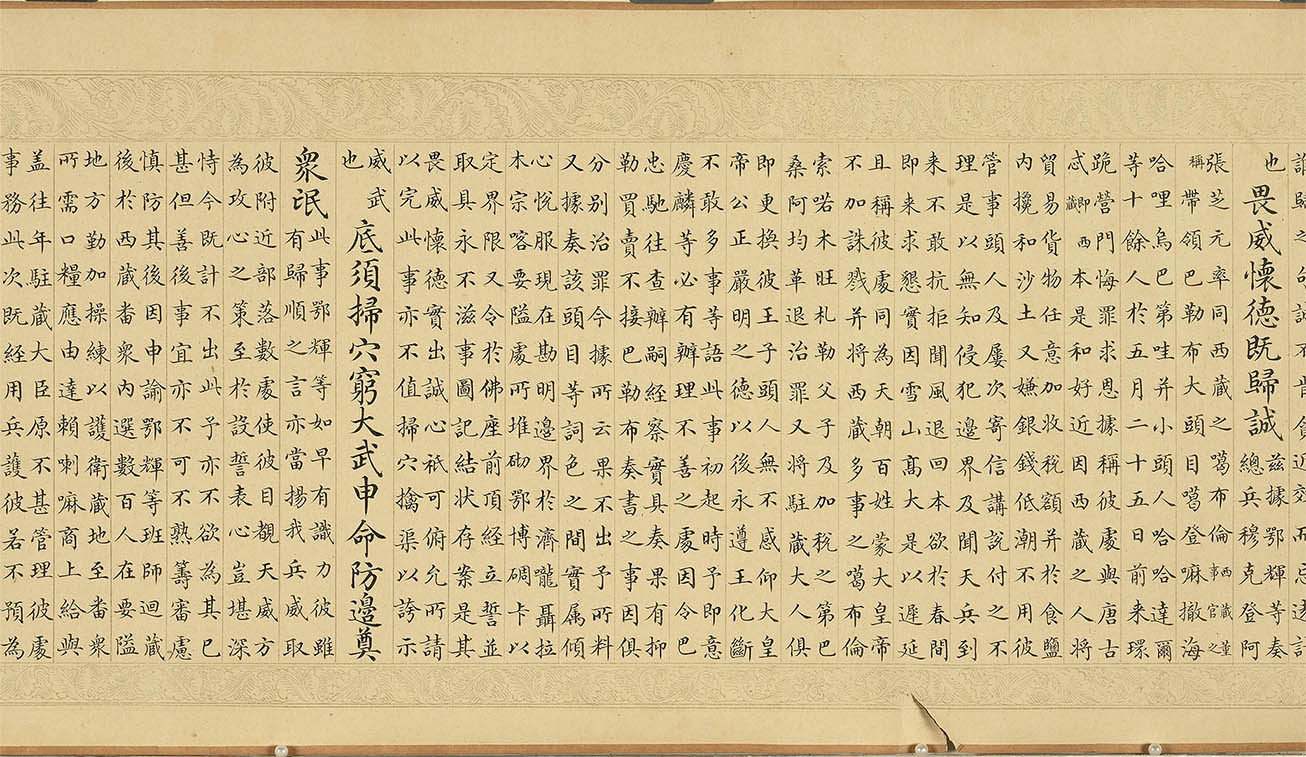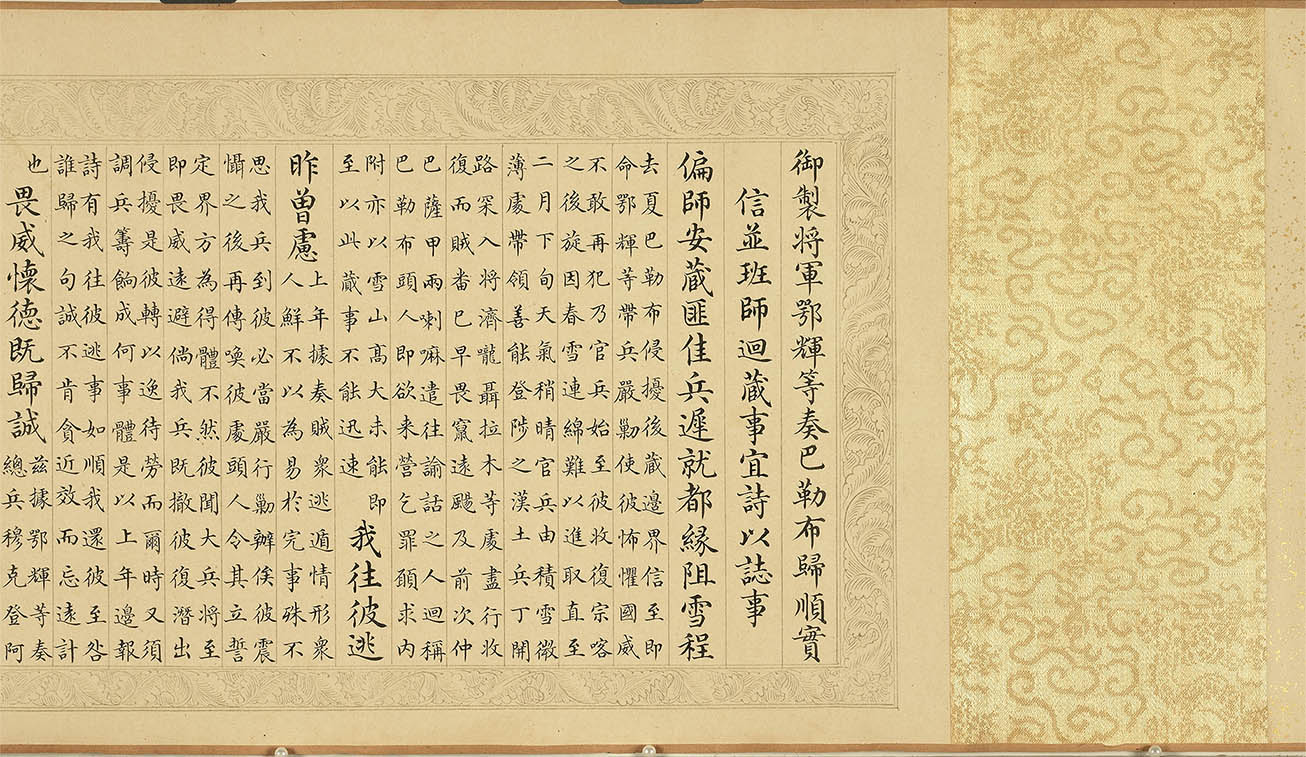The Dalai Lama and the Panchen Erdeni of Tibet
Two disciples of Tsongkhapa, Gedun Drupa (1391-1474) and Kedrup Je (1385–1438), were posthumously identified as the First Dalai Lama and the First Panchen Erdeni, respectively, which became the two foremost living Buddha lineages in the Gelug School. The title Dalai, the Mongolian word for "ocean," was bestowed upon the Third Dalai Lama (1543-1588) by the Mongolian ruler Altan Khan (1507-1582) of the Tumed. The Qing dynasty saw nine Dalai Lamas, from the Fifth to the Thirteenth. Panchen, on the other hand, is short for Pandita Chenpo, meaning "Great Pandita." The word Pandita is derived from the Sanskrit Paṇḍita, which means "Master of the Five Wisdoms."
The lineage of the Panchen Erdeni began with the Fourth Panchen Losang Chö kyi Gyaltsen (1570-1659), who received the title from Güshi Khan (1582-1654), leader of the Khoshut Mongols. The three immediate predecessors of Losang Chö kyi Gyaltsen were posthumously recognized as the First, Second, and Third Panchen Erdeni. The Qing dynasty saw six Panchens, from the Fourth to the Ninth. This section offers an iconographic introduction to the important reincarnated teachers of the Dalai and the Panchen lineages, and displays important artifacts connected with the visits to Beijing made by the Fifth Dalai Lama and the Sixth Panchen Lama to meet with Qing emperors. It also shows how the Qing court employed the "Golden Urn" system to select khubilghans and to what extent the practice impacted the living Buddha lineages of Tibetan Buddhism.
The Seventh and Eighth Dalai Lamas and Their Rule over Tibet
In the 18th century, the Tibetan region was far from peaceful. Clashes between various Mongolian and Tibetan powers forced the Qing court to send troops into Tibet several times to quell the unrest. It was not until the mid-Qianlong period that the Qing court transferred the power over Tibet to the Dalai Lama, who ruled under the supervision of an Imperial Resident provided with soldiers.
Portrait of the Seventh Dalai Lama
- Produced in Tibet, second half of 18th century
- Collection of Hung's Arts Foundation
A sūtra in his left hand, a lotus in his right, a sūtra on top of the lotus, and a sword on the sūtra: this is the typical iconography of the Seventh Dalai Lama, bsKal bzang rgya mtsho (1708-1757). The sword and sūtra indicate his association with Mañjuśrī. The Seventh Dalai Lama lived in a time of turmoil, when his predecessor, the Sixth Dalai Lama Tshangs dbyangs rgya mtsho (1683-?), was deposed and Lha bzang Khan (?-1717) took over, and the Dzungars invaded Tibet. While enduring many hardships, the Seventh Dalai Lama wrote many books, and of all the Dalai Lamas he was known for being a great scholar.
Palace memorial on Dalai Lama's life in Litang
- Submitted by Ren Guojong (n.d.), Regional Commander of Chungqing in Sichuan
- 27th day of the 6th month of the 7th year of the Yongzheng reign (July 22, 1729), Qing dynasty
In the 8th month of the 5th year of the Yongzheng reign (1727), a conflict broke out among the four Kalön ministers in Lhasa, when nga phod (?-1728) conspired with two other Kalön ministers to murder the then Kalön Tripa Khangchenne (?-1727) on the roof of the Jokang Monastery. On hearing the news of the assassination, Miwang Polhanai (1689-1747), the then Tayiji (a Mongolian aristocratic title), led troops from Xigazê in Western Tibet to Lhasa, plunging Tibet into a year-long civil war. The following year, the Qing court sent troops to Tibet to quell the unrest, and then set up the Office of the Imperial Resident (Amban) in Lhasa to strengthen its control of the Tibetan region. Later on, owing to continued inner turmoil in Tibet and threats of invasion from the Dzungars in Xinjiang, the Qing court decided to relocate the Seventh Dalai to forestall the possibility of his being kidnapped. In the 11th month of the 6th year of the Yongzheng reign (1728), the Seventh Dalai left the Potala Palace escorted by 5,000 Qing troops. The 2nd month of the following year, he arrived in Litang (in today's Sichuan province), and in the 8th year (1730) he was again moved to the Huiyuan Temple built for him by the Qing court. The Seventh Dalai lived in Kham for a total of seven years before he was allowed to return to Lhasa in the 13th year of the Yongzheng reign (1735), when the situation in Tibet had quieted down.
This palace memorial, presented by Ren Guorong, Regional Commander of Chongqing in Sichuan, in the 7th year of the Yongzheng reign (1729), describes the Seventh Dalai's living conditions and what he saw in Litang.
Statue of Six-armed White Mahākāla, Guhyasamāja, Cakrasaṃvara, Avalokiteshvara Jinasagara
- Statue of Six-armed White Mahākāla: Produced by the Zhol 'dod dpal Workshop in Lhasa, second half of 17th to 18th century
- Statue of Guhyasamāja: Produced by the Zhol 'dod dpal Workshop in Lhasa, second half of 17th to 18th century
- Statue of Cakrasaṃvara: Produced by the Zhol 'dod dpal Workshop in Lhasa, second half of 17th to 18th century
- Statue of Avalokiteshvara Jinasagara: Produced by the Zhol 'dod dpal Workshop in Lhasa, 18th century
These four statues were produced in the Potala Palace's Zhol 'dod dpal Workshop. This workshop, which made religious items, can be traced back to the beginning of the construction of the Potala Palace in 1645 by the dga' ldan pho brang government established by the Fifth Dalai Lama (1617-1682). The Workshop officially came into being towards the end of the time of the Seventh Dalai Lama (1708-1757).
Certificate of Acknowledgement Issued to Jamyang Khutuktu by Dalai Lama
- Qianlong reign (1736-1795), Qing dynasty
The Jamyang Khutuktu, or the Muli Kyabgon of the three Kyabgons of Kham, is an earlier living Buddha lineage of the Gelug School. In the 8th year of the Wanli reign in the Ming dynasty (1580), the Third Dalai (1543-1588) went to the Litang Monastery to preach and sent his disciple Choje Sangje Gyatsho (1597-1656) to Muli (in today's Sichuan province) to teach and build the Muli Monastery. When Choje Sangje Gyatsho passed away, he was posthumously recognized by his disciplines as the second reincarnation of the Muli lineage, while Lodro Chojung (1389-1466) was named the first. The lineage is named "Jamyang Khutuktu" because Lodro Chojung was one of the seven Jamyangs (Jamyang means Mañjuśrī in Tibetan, but here it refers to the seven monks who carried the dharma name of Jamyang), who were disciples of Tsongkhapa. The Qing court's Lifan Yuan (Board for the Administration of Outlying Regions) recorded the lineage as the Muli Khutuktu.
This document in Tibetan script is likely a copy of a certificate in which the Dalai Lama endorsed the Jamyang Khutuktu. In addition to listing the dharma names of the first two Jamyang Khutuktus, the document also named the third (Jamyang Zangpo, 1585-1646), the fourth (Ngawang Konchog, 1714-1719), and the fifth (Ngawang Phuntshog). This certificate was issued to the Sixth Jamyang Khutuktu, Ngawang Palden Gyathso, and explains that he studied at the Drepung Monastery. Although the document does not list the name of the Dalai Lama or the year issued, it was likely issued during the administration of the Eighth Dalai (1758-1804).
Imperially Produced Poem on Receiving General Ehui's Report of the Submission of Balebu (Nepal) and the Return of His Army to Tibet
- Jing Shisong (1730-1800), Qing dynasty
- Handscroll
After quashing the rebellion led by Gyurme Namgyal (?-1750), the Qing court promulgated the "Ordinance for the More Effective Governing of Tibet" with 13 articles in the 16th year of the Qianlong reign (1751), which stipulated the secular power of the Dalai Lama, thus establishing a system of checks and balances involving three parties: the Imperial Resident in Tibet, the ministers of treasury (rtsis-khang) from the Dalai Lama administration, and the Kashag Cabinet. This poem was written in the 54th year of the Qianlong reign (1789), when the Gurkhas invaded Tibet for the first time.
Ehui (?-1798), then Governor-general of Sichun, had just returned from an expedition to Taiwan to quell the Lin Shuangwen (1756-1788) rebellion and was immediately ordered to lead troops to Tibet to fight off the Gurkhas. In an annotation to the poem, the Qianlong emperor noted that the Tibetan borders should be guarded by troops and that their daily rations should be supplied by the Dalai Lama administration. Following the Gurkha War, the Qing court promulgated the "Ordinance for the More Effective Governing of Tibet" with 29 articles in the 58th year of the emperor's reign (1793), which reconfirmed the power of the Imperial Resident in Tibet and the Kashag.
The Imperial Resident in Tibet, the Dalai Lama, and the Panchen Lama had equal status, and the Imperial Resident in Tibet would preside over the "Golden Urn" system to select the khubilghan, including the Dalai and the Panchen Lamas.
Jin Shisong was awarded the jinshi degree in the 25th year of the Qianlong reign (1760). He served as Minister of War and specialized in Yan Zhenqing's (709-785) style of regular script calligraphy. The colophon found on the Fuchun Shanju Tu (Dwelling in the Fuchun Mountains) by Huang Gongwang (1269-1354) is one of his more well-known calligraphic works.
